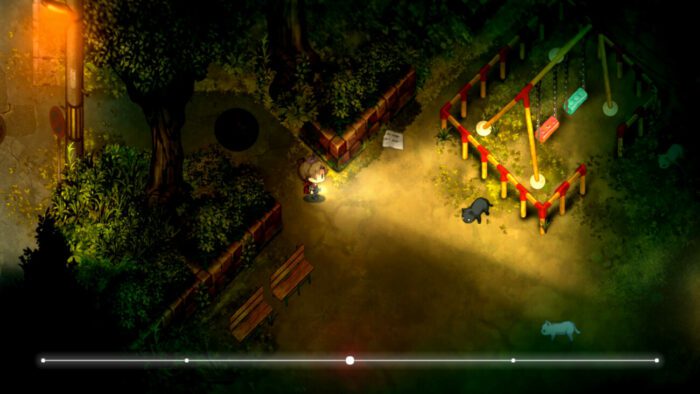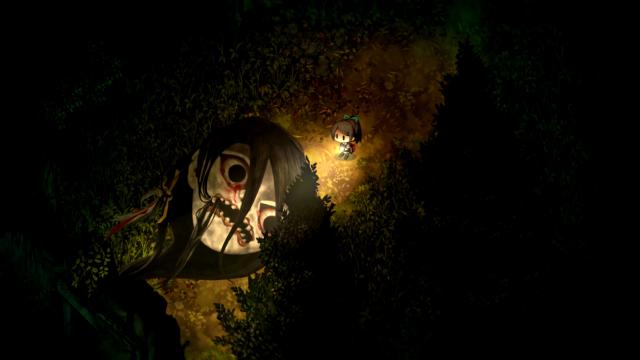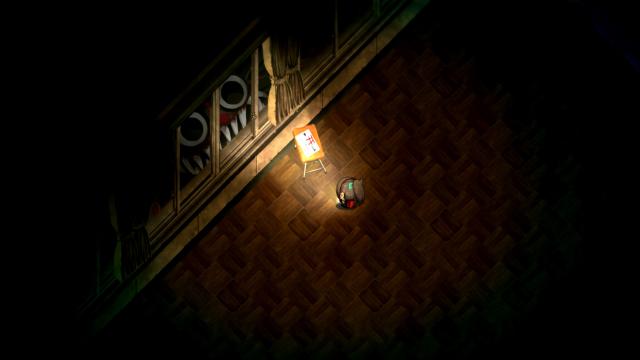Yomawari: Lost in the Dark is the surprise third entry in the Yomawari series. The second entry, Midnight Shadows, dropped five years ago, which is why the release of the next game is such a pleasant surprise. It dropped back at the end of October—perfect for Halloween, but make no mistake: Lost in the Dark is yet another chillingly quiet, deeply unsettling experience perfect for any time of the year. And while it does run into a lot of the same pitfalls as its predecessors, it’s tough not to recommend it when the atmosphere is so compelling.

For those not in the know, each Yomawari title puts you in the shoes of a young girl who, for a variety of reasons, must venture out into a long and lonely night to solve some greater problem. The first game’s story was rather bare bones, with a simple framing device being used as more of an excuse for the levels and set pieces. In that game, you were a nameless protagonist looking for her sister, who went out to find their dog. The second game had a much greater emphasis on the story, with it following a pair of friends who are about to drift apart when one of them moves away at the end of the summer. Lost in the Dark is something of a middle ground between the two; it’s about a girl canonically named Yuzu who has lost her memory. She is plagued by visions of a mysterious older girl and must recover lost personal items to recover her missing memories and figure out just what is going on with her hometown.
The reason I say that it’s something of a happy medium between the two entries is that there is definitely more story than Night Alone, but it’s not quite as focused or emotional as Midnight Shadows. The second game is still the best in terms of sheer emotional gut punches, but the tale in Lost in the Dark is no slouch, either. The majority of the game is about exploring various haunted locales around town, but it really kicks into high gear in the final couple of hours after a fake-out ending. This is where the bulk of the plot’s development lies, and it does some clever and kind of heartbreaking things that I can’t discuss without spoiling things. It’s an absorbing tale, one I found myself more interested in the longer it went on, and by the end, I still felt some bittersweetness.
And even though this one uses the same art style as previous entries, there’s a good reason for that: there’s still nothing else quite like it in gaming. Character models use a chibi style that gives Yuzu a storybook protagonist feel. She’s very clearly a vulnerable, naïve kid in this dark town, which is reflected by the absolutely beautiful hand-painted environments. Everything is given a slight saturation, meaning it’s not realistic, but very grounded and evocative. This is aided by the sound design, which, apart from the title screen and credits, is entirely diegetic. Crickets chirp in the distance, and often the only other sound is Yuzu’s footsteps which feel heavy in the quiet night. This means that when you hear something out of the ordinary, you know that a new danger or discovery is just around the corner, and it creates a uniquely unsettling atmosphere.

These are absolutely horror titles, but one would be remiss to call them terrifying. The atmosphere of Yomawari is more about a feeling of loneliness and isolation. Apart from the mysterious girl, you don’t meet any other human in the whole game, which further sells the storybook gone wrong vibe the games go for. It’s easy to imagine the streets as bustling and busy during the day, but the emptiness of them at night makes them feel threatening and twisted. That’s not to say you don’t run into anything else at all, though. It turns out that there are plenty of spirits wandering around, and every single one of them is hostile toward you.
This is where the bulk of the game’s challenge comes from. There is, as always, an impressive bestiary in Lost in the Dark. Some of the spirits are returning classics, like the bulbous-headed pale ghosts that moan in pain the closer you get. There are plenty of new ones too, including some absolutely horrific bosses, which I’ll come back to. The variety is about more than just looking neat, though. Each spirit behaves differently, and getting around each one requires you to do a specific action. For instance, the aforementioned bulb-headed ghosts can be skirted around if you close your eyes and walk by them. This is opposed to a suicide ghost which takes the form of a woman; she screams and then falls to the ground from an unknown height. Not only is it an effective jump scare, but it’s a different method of attacking the player. Running into a spirit means instant death, which is accompanied by a blood-splattered screen and gruesome sound effects like bones breaking and smacking lips.
While exploring the town is spooky fun, the main goal is to find a variety of personal items belonging to Yuzu to further develop her memories and tell her where to go next. In a neat twist, this game is far more open-ended than previous titles; you’re given two items that hint where to go early on and can tackle them in either order (to the best of my knowledge, at least). Once you’re at a given location, you’re introduced to a mini-story you must solve. For instance, the first major location I went to was the school. There were signs around the area warning me of a girl whose throat was found slit and more warning me not to go in at night. Of course, I did, and once inside I was stalked by an imposing and memorable ghost who is kind of like Slender Man with a huge sickle. In the school, I found notes about the seven wonders hiding within, each one a different supernatural phenomenon such as a ghost haunting a bathroom stall or anatomical skeletons that move when you close your eyes.
For the most part, the mini-stories presented in each level are compelling as a traditional ghost story. There’s a good variety on offer, too, meaning each segment feels distinct from the others, making the game as a whole feel very memorable. It gives the world a lot of texture and further adds to the atmosphere; these places that are seemingly harmless during the day are plagued by nightmares at night. Exorcising these nightmares is the goal of each area, and it’s here where the game is at its most frustrating. There’s no combat to speak of in Lost in the Dark, meaning that bosses are instead a matter of memorizing patterns to progress. You still die in one hit, too, and you’re brought back to the beginning of the whole encounter if you die. This leads to a LOT of trial and error, which is extremely frustrating depending on who you are.

For me, these could definitely wear on me, but I didn’t find myself quite as frustrated as I was with the original Night Alone. If nothing else, these bosses do succeed in making Yuzu feel small and vulnerable, but I’d be lying if I said the repetition of dying over and over again didn’t get to me at times. Beating a boss brings relief, at least, and in a neat twist, you can return to areas you’ve cleared to search for side items and refight bosses for special trinkets. This might serve completionists best, but it’s nice that Nipon Ichi Software gave players a reason to return to old locales.
Your mileage may vary with Yomawari: Lost in the Dark. Each title is extremely similar to the previous one, thanks in no small part to the distinct art style the series is known for. Lost in the Dark won’t change your mind if you disliked other games in the series, but I am so in love with the mood and atmosphere that Lost in the Dark was exactly the game I wanted to play in October. This is the most open-ended game yet, and even after finishing the true ending, there are still dozens of items I haven’t found in the town yet. I don’t know where the series will go from here, as a fourth entry with similar mechanics might become stale, but for now, the Yomawari series continues to offer quiet, unnerving scares unlike any other franchise I’ve seen, and I’m looking forward to uncovering the rest of the town’s secrets.
Yomawari: Lost in the Dark is now available on Steam, Playstation 4, and Nintendo Switch.


